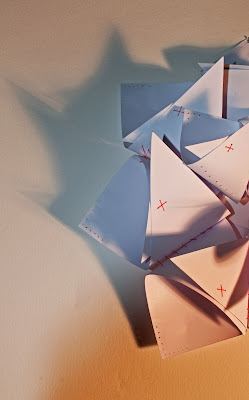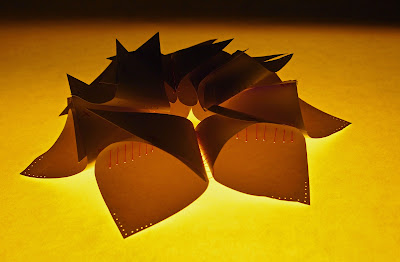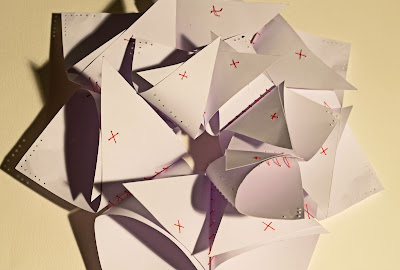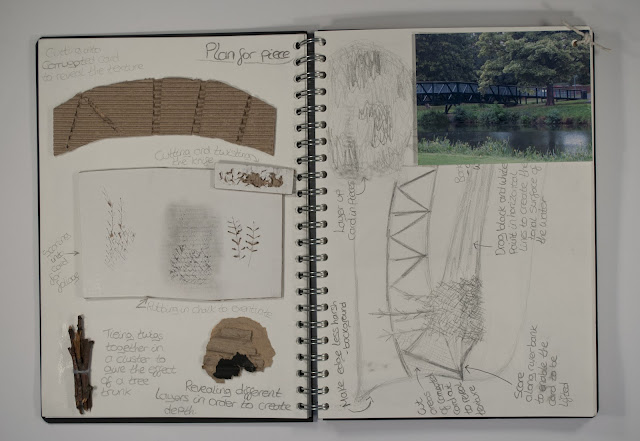For my first drawing I used wet bark and mud for the tree trunk in the foreground, which had the most light projecting onto it, and ink and mud for the trees further in the background with charcoal being used for the cross-hatched foliage. I really enjoyed creating the drawings from a wide variety of materials as you're able to make the piece much more visually interesting and bring much more texture to it.
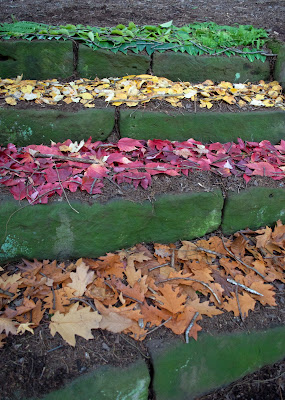 We collected a bin bag full of green, yellow, red and orange leaves and arranged them along four outside steps. Our inspiration came from Andy Goldsworthy's arrangements of leaves in specific colour orders and Andy Gallaccio's way of arranging natural objects in unnatural ways. Due to the weather on the day we had to improvise with our idea and use twigs to keep the leaves down. We thought that using twigs would be a good idea as it fit in with the other natural materials and was a good use of what we could find around us.
We collected a bin bag full of green, yellow, red and orange leaves and arranged them along four outside steps. Our inspiration came from Andy Goldsworthy's arrangements of leaves in specific colour orders and Andy Gallaccio's way of arranging natural objects in unnatural ways. Due to the weather on the day we had to improvise with our idea and use twigs to keep the leaves down. We thought that using twigs would be a good idea as it fit in with the other natural materials and was a good use of what we could find around us.To add another aspect of interest we arranged some of the leaves in a repetitive pattern, again using inspiration from Gallaccio's work by putting the leaves back from where they came from, but in an abstract manner-quite like her piece 'Because Nothing has Changed'. I think that both parts of the piece worked well together as, although leaves are found on the ground and on trees, we arranged them in a way which you wouldn't normally find them that almost makes you appreciate their appearance and beauty when in multiples.
I was really pleased with the outcome of our end piece as, although it is quite simple, I think that this makes it that bit more effective. We wanted to create something which was unnatural. Although leaves are found on the ends of branches and fallen leaves found on the ground, the way in which we arranged the leaves was in an abstract and visually attractive manner, highlighting their natural beauty when grouped together in such a way.





